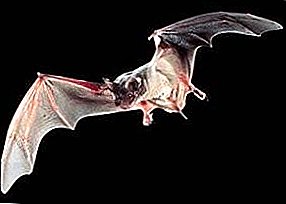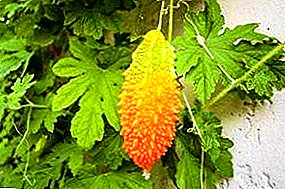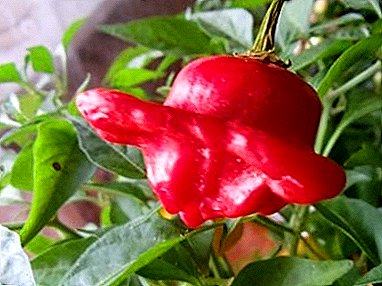
The bats are the only mammal that by nature can fly.
They live in almost all climatic zones, with the exception of the arctic and high mountain areas. The first animals of this species appeared on earth more than 50 million years ago.
Known more than 700 species of bats, most of which are insectivorous.
The bats useful for farms, because they lead nightlife, destroying insects when almost all birds sleep.
What is a bat?
Bats belong to the order of the bats. It means that both front legs turned into big wings, and the very elongated fingers serve as a frame for them.
Such a structure does not allow them to float like birds, forcing them to constantly flap their wings.
The flight speed of bats can vary from 15 km / h with simple movement, up to 60 km / h while catching insects.
Another distinctive feature of these animals is landing method. For a short period of time, bats need to quench their speed and sit on a horizontal surface with their head down. Nests they do not create.
A photo
You can take a closer look at the bats in the photo with the names of the species.
White bat in the photo:
Bulldog bat:
Fruit dog bat:
Smooth Bat:
Bat novice:
Podatonosya bat:
Piggy bat in the photo:
Bat long-eared bat:
The vampire bat pictured:
Vesper bat:
Varieties
White
Whitetail or Honduras white bat one of the smallest representatives families. In addition to Honduras, he lives in Central America - Nicaragua, Costa Rica, Panama.
Body - up to 4.5 cm longThe ears are small, the nose is of unusual shape. Through it, the animals produce echolocation - this structure makes it possible to focus and amplify the sent signals.
They live under large sheets of heliconium, gnawing holes in them so that the ends, hanging over, form a tent. Eat fruit.
Usually under one sheet lives a family of bats from 5-6 individuals, but sometimes there are several families united in a large clan. Females give birth one cub per year.
Piggy
Swine bat or bumblebee mouse was discovered in 1973. The bat got its second name due to its size - body no more than 3.3 cm, and weight - up to 2 grams. This is the smallest bat.
In addition, on the face is a characteristic pork-like nose. The ears are large, but the pig, unlike other animals of the family, has no pig.
 Main region of habitat - Thailand and some neighboring lands. He lives in limestone caves, to hunt flies in groups of 4-5 animals.
Main region of habitat - Thailand and some neighboring lands. He lives in limestone caves, to hunt flies in groups of 4-5 animals.
Do not move away from the place of housing for more than 1 km. Insects look for in the thickets of bamboo or teak wood. There is no exact data on the reproduction, most likely in a year the female brings one calf.
Vespers
Vespers - one of the great genera of bats, which includes 8 species and 13 subspecies. They live in Europe and North Africa, where are the largest bats themselves from their own kind.
Body length - from 10 to 50 cm. It dwells mainly in deciduous forests, does not settle in treeless spaces.
Hunt at dusk and at dawn, preferring beetles and butterflies. The biggest parties are gigantic, can eat small songbirds.
Sensitive to frost, because with the onset of cold weather they migrate to distances up to 1000 km. Females bring one or two, rarely three cubs.
Flying dog and fox
Flying dogs or flying foxes, fruit bat - this is a common name for a whole species of animal, the winged.
In fact, they are not bats that are insectivorous, but closer in their structure and development to herbivorous primates.
 The main differences from each other - food consumed, structure of the wing, the use of echolocation in mice and vision in the winged.
The main differences from each other - food consumed, structure of the wing, the use of echolocation in mice and vision in the winged.
These animals not found in RussiaTheir main residence is the Asian rainforests of Vietnam, the Philippines, Malaysia, Laos and other countries.
Nicknamed "flying dogs" they got because characteristic elongated muzzle. Adult wings have large sizes - body up to 42 cm, wings up to 1.7 meters. Weight up to 900 grams.
They live in large colonies, settling in the trees. Eat tropical fruits, especially like bananas, papayas, coconuts, grapes and others.
Because of the gastronomical tastes of the krylan, they are called "fruit mice". Fruits do not eat, but only suck juice and pulp out of them.
IMPORTANT! A flock of pods can cause significant damage to the farm by “embracing” fruits on all trees in the garden.
Sleeping animals upside down. You can often see a picture when in cold nights one wing is used as a blanket, wrapping the whole body, and in the heat - instead of a fan.
The female has one cub every year.
Smooth
Smooth-nosed bats - a large family that includes more than 318 species.
The name got due to the fact that they do not have any distinctive features, smooth muzzle without cartilaginous processes.
 The family of smooth-nosed leathers are leather, bats, ballgowns, long-eared bat and many others.
The family of smooth-nosed leathers are leather, bats, ballgowns, long-eared bat and many others.
Live around the worldwhere there is woody vegetation. In Russia, there are 37 species of such mice.
Activity is shown at dusk or at night when hunt for various insects. Separate types of night lamps eat fish.
In the cold period, hibernation occurs, but some (such as evening girls) fly to warmer places. Females in a season give birth once in 1-2, less often 3-4 individuals.
Ushan
Ushans - a kind of bat that has large earsused for echolocation. In sleeping animals, they hide under folded wings.
Due to the short but wide wings, this animal can flutter and even briefly hover in the air to hunt insects. Body length - 5-6 cm.
Distributed throughout the continent from the Atlantic to the Pacific, in northern Asia, in North Africa.
They feed on mosquitoes, moths, beetles, and the like. insects. The female gives birth to one, rarely two pups within a year.
Nightmare
Nightmares or short-eared bats are a variety of smooth-bats.
Body length - 3.5-8.5 cm. Are common all over the worldexcept arctic zones.
In general, they are the only species that has adapted to life in absolutely any natural conditions, even disastrous for other bats. In Russia, there are about 19 species.
Feed on night insects. The female during the year brings one, rarely two cubs.
Podkovonosy
 Podkovonosy - type of bats, which were so named because of cartilaginous outgrowth around the noselooking like a horseshoe.
Podkovonosy - type of bats, which were so named because of cartilaginous outgrowth around the noselooking like a horseshoe.
Such a structure is necessary for echolocation, the signals of which are emitted through the nostrils. Are common in the eastern hemisphere, live in Russia only in the Caucasus.
Eating insectshunted on the fly. May hang for a while on the spot.
On the hunt take off about half an hour after sunset, and show activity the first half of the night. Females give birth to only one young during the year.
Bulldog
Bulldog bats are a family that is different from all other tribesmen. more developed wings - they are narrow, long and pointed.
Because of this, the frequency of strokes is somewhat higher than that of other mice. Average body length - 4-14.5 cm. Live in tropical areas both hemispheres.
They can form groups from several tens to millions of individuals. Flying fast, echo signals of very high intensity.
Some species may bring 3 litters per year, consisting of one cub each time.
Vampire
IMPORTANT! They are dangerous to people and domestic animals, because during the bite they can transmit rabies and various infectious diseases.
Vampire bats are a whole family whose representatives are parasites.
They eat only fresh blood other animals or birds may occasionally attack and on sleeping people.
 Echolocation is poorly developed; during hunting they rely more on excellent hearing and infrared receptors. With the help of the latter, the least protected skin area is determined.
Echolocation is poorly developed; during hunting they rely more on excellent hearing and infrared receptors. With the help of the latter, the least protected skin area is determined.
They live in Central and South America.
Conclusion
The world of bats is very diverse. Here there are both very small animals and individuals with wings over 1.5 meters.
Most bats feed on insectsthan benefits man and agriculture.
However, there are species that can eat fruit, or even attack sleeping animals and birds for the purpose of obtaining blood.












